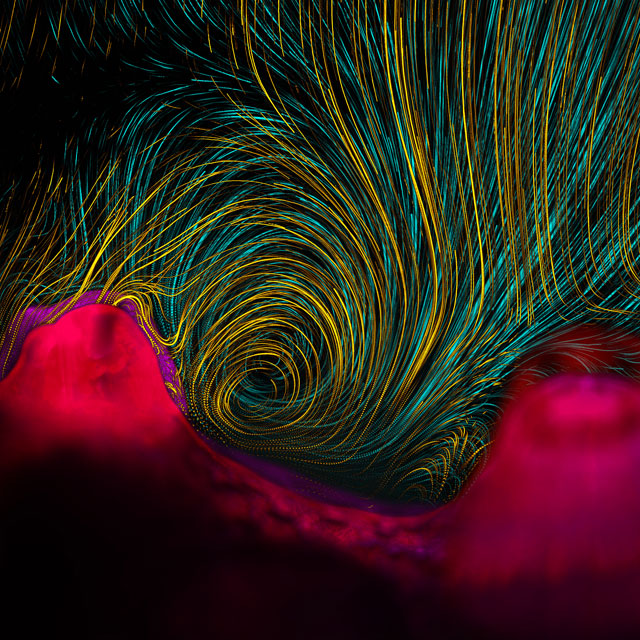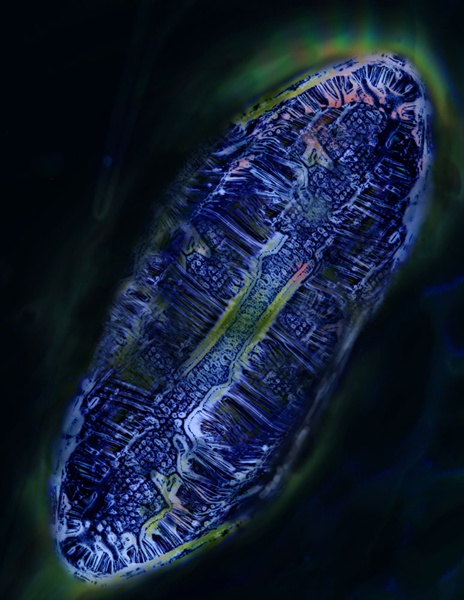Science Visualization Challenge 2013

National Science Foundation and ‘Science’ journal teams up every year to sponsor the International Science and Engineering Visualization Challenge. The challenge is all about bringing meaningful scientific data to beautiful art, that is easily understandable visuals.
Last Thursday, 18 winning entries were announced out of 277 submissions for 2013 competition. Here is the list of winners and their work.
Photography – First Place
Invisible Coral Flows reveal the hidden flow generated by small hairs (cilia) covering the surface of the coral, between two coral polyps that are 3 mm apart. Two shots taken 1.5 hours apart are combined into a single image, showing how the coral is able to create a long-lasting whirlpool structure that alters the local environment and enhances the coral’s ability to “breathe.”

Credit: Credit: Vicente I. Fernandez, Orr H. Shapiro, Melissa S. Garren, Assaf Vardi and Roman Stocker, Massachusetts Institute of Technology
Other winners
Stellate leaf hairs on Deutzia scabra
These exuberant starbursts shoot from the leaves of Deutzia scabra, a deciduous shrub sometimes known as “Pride of Rochester.” Its leaves are covered with tiny hairs tipped by stars a quarter-millimeter across, giving it a fuzzy texture that Japanese woodworkers sometimes use for fine polishing.
Polymer Micro-structure Self-assembly
This image demonstrates results of the study of micro-structure formation in polymers that self-assemble into different shapes ranging from grains to lines interconnected into complex patterns and meshes. It shows the microstructure of a 2-millimeter-long fragment of self-assembled polymers, which University of South Florida materials scientist Anna Pyayt is using to build miniature “lab-on-a-chip” devices for biomedical diagnostic applications.
Illustration – First Place
Cortex in Metallic Pastels represents a stylized section of the cerebral cortex, in which axons, dendrites, and other features create a scene reminiscent of a copse of silver birch at twilight. An accurate depiction of a slice of cerebral cortex would be a confusing mess, says illustrator Greg Dunn, so he thins out the forest of cells, revealing the delicate branching structure of each neuron. Dunn combined his background in neuroscience and his love of Asian art, to create the sparse, striking illustrations of the brain.
Security Blanket
Security Blanket displays a multicolored “word cloud” of the 1000 most common passwords in the social gaming website, RockYou. The passwords were sized according to their frequency and colored according to their theme. The most common–“123456”–was chosen by three times as many people as the next most popular password.
Human Hand Controling Bacterial Biofilms
In our war against bacteria, the microbes are winning. That somber message is writ large in this image of a human hand covered with Pseudomonas bacteria. Those colored green are resistant to antimicrobial treatment–only a rare few are red, indicating that they have been vanquished.
——–
Click here to visit the National Science Foundation’s Challenge website and see the full list of winners.





